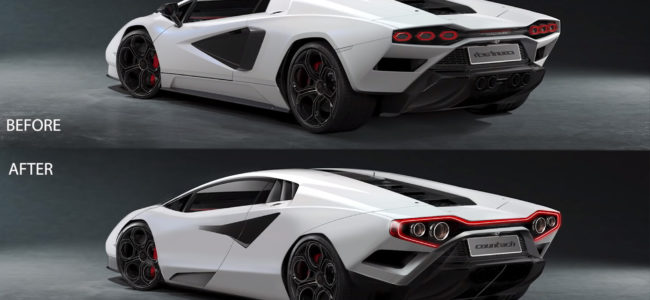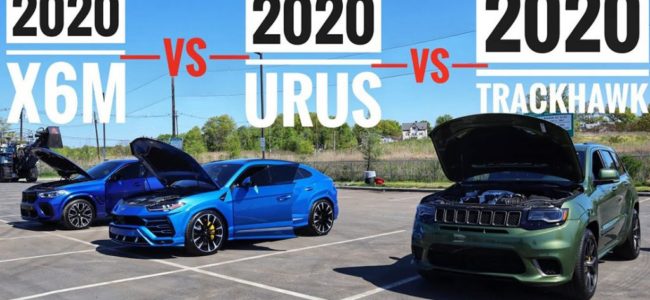The market for $1 million cars has exploded in recent years, and there are now many more choices in this rarefied segment than there used to be a decade ago.
One nameplate you wouldn’t expect to find on a list of cars that cost $1 million is the Nissan GT-R, though. That changed late last year when the production version of the limited-edition Nissan GT-R50 by Italdesign was announced.
Made in just 50 units worldwide, the anniversary model is offered for a whopping €990,000 in Europe – the equivalent of $1.09 million in U.S. currency. For the money, buyers will get a unique coachbuilt body, an interior tailored to their exact specifications, the underpinnings of the 2020 Nissan GT-R Nismo, and then some.
See Also: Nissan GT-R50 By Italdesign Limited Edition Unveiled In Production Guise

The hand-built 3.8-liter twin-turbocharged V6 is specially tuned by Nismo to deliver 720 PS (710 HP) and 780 Nm (575 lb-ft) of torque, rounding out a very special package. But isn’t $1.09 million a bit too much to pay on what is essentially an Italian-styled and more powerful GT-R Nismo?
This got us thinking, what else could you buy for that kind of money? The following list is not exhaustive, as we mainly tried to illustrate the diversity of existing alternatives to the coachbuilt GT-R. You are more than welcome to add your own suggestions in the comments section. Here we go!
10 Nissan GT-Rs or 5 Nissan GT-R Nismos

Yes, $1.09 million will buy you roughly 10 (9.5 to be exact) 2020 Nissan GT-Rs – you know, if you ever wanted your entire family to drive GT-R. Priced from $115,335 (including a $1,795 destination and handling fee), the 565 HP 2020 Nissan GT-R is a supercar killer that seems like a bargain compared to the GT-R50.
If you feel your family members deserve better, you could spend your $1.09 million on five 2020 Nissan GT-R Nismos. At a cool $212,535 each, the 600 HP GT-R Nismo is the car the GT-R50 is based on.
Aston Martin V12 Speedster: $938,500

If buying a bunch of Japanese sports cars for $1.09 million is too vulgar and below your dignity, Aston Martin may have something for your exacting demands. It’s called the V12 Speedster and it’s created by the bespoke customization service ‘Q by Aston Martin’ in a run of just 88 units, each priced at £765,000 ($938,500). This makes it a much more affordable alternative to the McLaren Elva and Ferrari Monza SP2 while looking every bit as special.
With no screen or roof, the Aston Martin V12 Speedster packs a a twin-turbo 5.2-liter V12 engine tuned to produce 690 HP (700 PS) and 555 lb-ft (752 Nm) of torque. That’s about the same as the GT-R50, but do you think people will even notice the Nissan parked next to this?
McLaren Senna: $1.05 Million

It’s not that often a Nissan GT-R costs more than a McLaren hypercar, but that’s exactly the case with the GT-R50 and the Senna. The mid-engined British model starts at $1,050,000, which means you can also pocket $40,000 after the purchase.
You’ll get a hypercar whose 4.0-liter twin-turbo V8 churns out 800 PS (789 HP) and 800 Nm (590 lb-ft) of torque, enabling a 0-100 km/h (0-62 mph) sprint of 2.8 seconds and a 211 mph (340 km/h) top speed. Plus, it’s named after the late, and legendary, Ayrton Senna. What else is there to add?
NIO EP9: $1.2 Million

Let’s stay in the realm of hypercars with a very special model, the all-electric NIO EP9. Admittedly, we went over budget with this one but we can make an exception to include the Nürburgring lap record holder for electric vehicles, which has posted a time of 6 minutes and 45.90 seconds on the German track.
Built by China’s NIO in a run of only 16 units, the EP9 is way more exclusive than the Nissan GT-R50 by Italdesign. It’s also way faster, as its four electric motors totaling 1,360 PS (1,342 HP) enable it to do 0-100 km/h (0-62 mph) in 2.5 seconds and reach a top speed of 313 km/h (194 mph).
Lamborghini’s Range: Aventador SVJ ($518,000) + Urus ($211,231) + Huracan Evo Spyder ($287,400)

This dream trio totals a little over $1 million and would make one heck of a garage for a Lamborghini enthusiast. Think about it; you’d have the stellar performance and presence of the 770 HP Aventador SVJ coupe, the practicality and all-terrain capability of a 650 HP Urus, and the open-top character and raw emotions unleashed by the 631 HP Huracan Evo Spyder. Hard to beat this combination, right?
Ferrari 812 Superfast ($338,750) + Ferrari SF90 Stradale ($625,000)

Well, if you’re a Ferrari kind of guy, you could have two of the hottest thoroughbreds from Maranello right now. We’re talking about the front-engined, 789 HP 812 Superfast and the mid-engined, 986 HP SF90 Stradale plug-in hybrid. You’ll be left with plenty of “change” too – $126,250 to be exact. The cash could come in handy as maintaining not one but two Ferraris is not to be taken lightly.
The range topping variant of each Porsche model

If reliability and bang-for-buck are important for you, you could simply spend your $1.09 million on getting the most expensive models of Porsche’s lineup. We’re talking one of each model line.
Here they are: 718 Spyder ($97,650), 718 Cayman GT4 ($100,550), 911 Turbo S Cabriolet ($217,650), Taycan Turbo S ($188,960), Panamera Turbo S E-Hybrid Sport Turismo ($193,050), Macan Turbo ($85,950), and Cayenne Turbo S E-Hybrid Coupe ($165,750). The grand total is $1.05 million and that would cover all your motoring needs, from sports cars, wagons and sedans to SUVs, motivated by gasoline, plug-in hybrid or all-electric powertrains.
Over to you now: how would you spend your (hypothetical or real) $1.09 million?
PHOTO GALLERY
more photos…



















